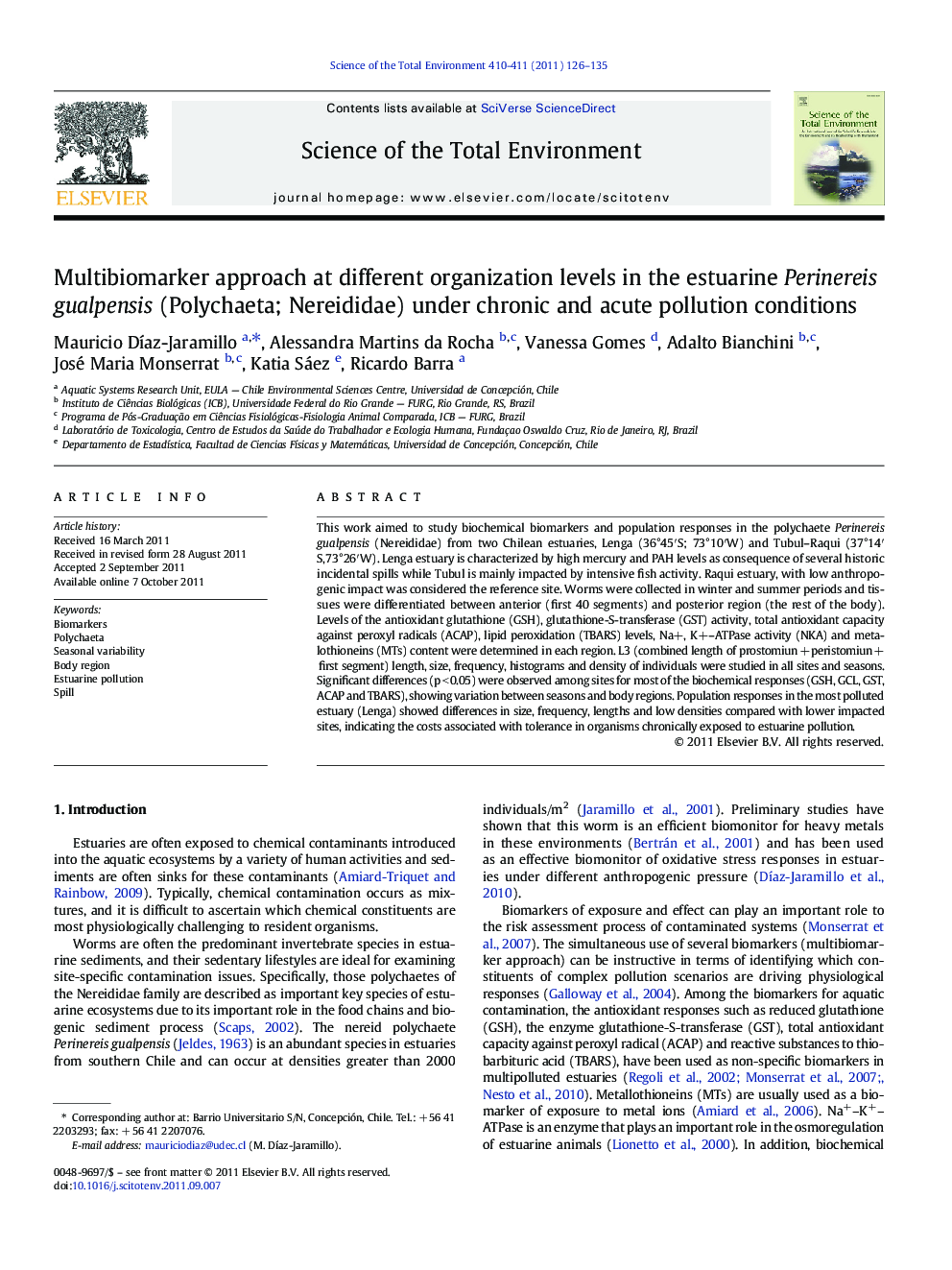| Article ID | Journal | Published Year | Pages | File Type |
|---|---|---|---|---|
| 4429882 | Science of The Total Environment | 2011 | 10 Pages |
This work aimed to study biochemical biomarkers and population responses in the polychaete Perinereis gualpensis (Nereididae) from two Chilean estuaries, Lenga (36°45′S; 73°10′W) and Tubul–Raqui (37°14′S,73°26′W). Lenga estuary is characterized by high mercury and PAH levels as consequence of several historic incidental spills while Tubul is mainly impacted by intensive fish activity. Raqui estuary, with low anthropogenic impact was considered the reference site. Worms were collected in winter and summer periods and tissues were differentiated between anterior (first 40 segments) and posterior region (the rest of the body). Levels of the antioxidant glutathione (GSH), glutathione-S-transferase (GST) activity, total antioxidant capacity against peroxyl radicals (ACAP), lipid peroxidation (TBARS) levels, Na+, K+–ATPase activity (NKA) and metalothioneins (MTs) content were determined in each region. L3 (combined length of prostomiun + peristomiun + first segment) length, size, frequency, histograms and density of individuals were studied in all sites and seasons. Significant differences (p < 0.05) were observed among sites for most of the biochemical responses (GSH, GCL, GST, ACAP and TBARS), showing variation between seasons and body regions. Population responses in the most polluted estuary (Lenga) showed differences in size, frequency, lengths and low densities compared with lower impacted sites, indicating the costs associated with tolerance in organisms chronically exposed to estuarine pollution.
► Biomarkers back to pollution scenarios, seasonality and population level outcomes. ► Biomarkers at different body regions reflect seasonal and intersites differences. ► P. gualpensis length, frequency, and densities differ with estuarine pollution status ► GST, GSH, ACAP and NKA are suitable biomarkers for estuarine pollution assessment.
